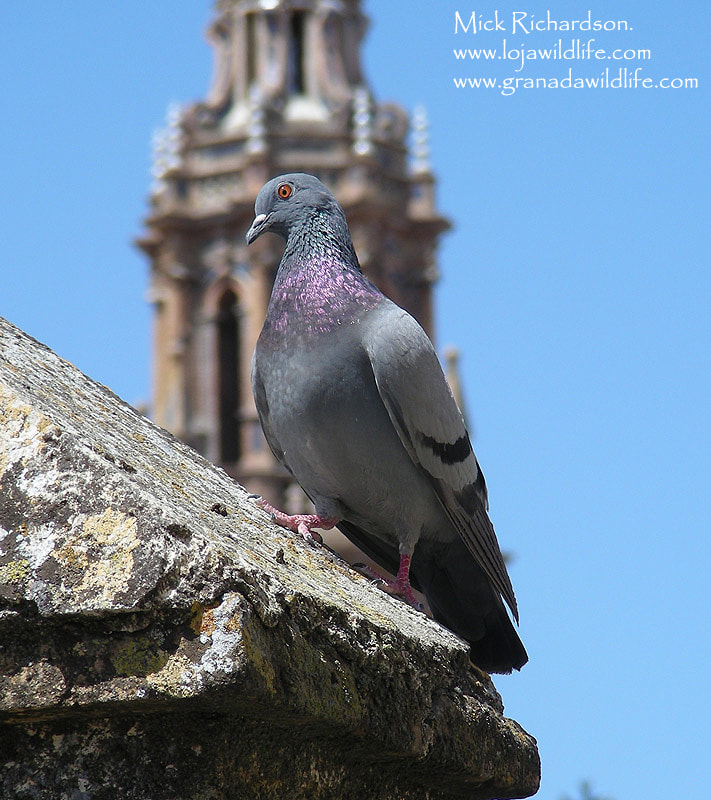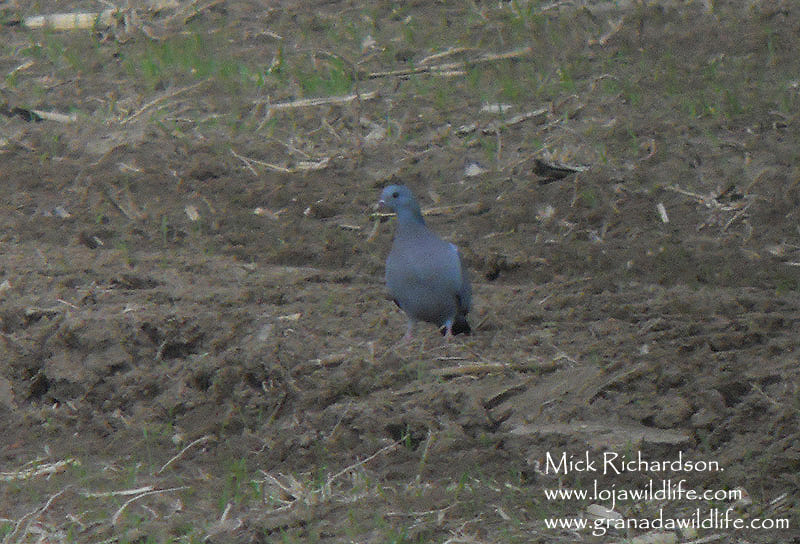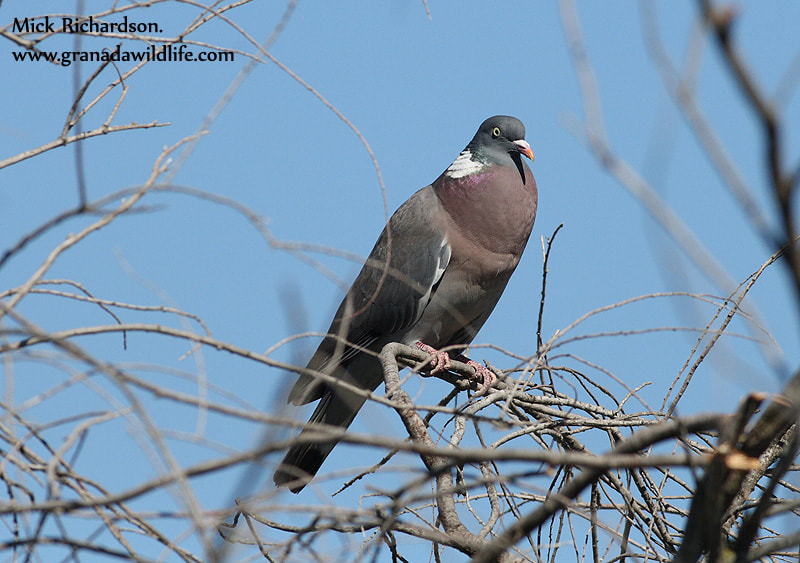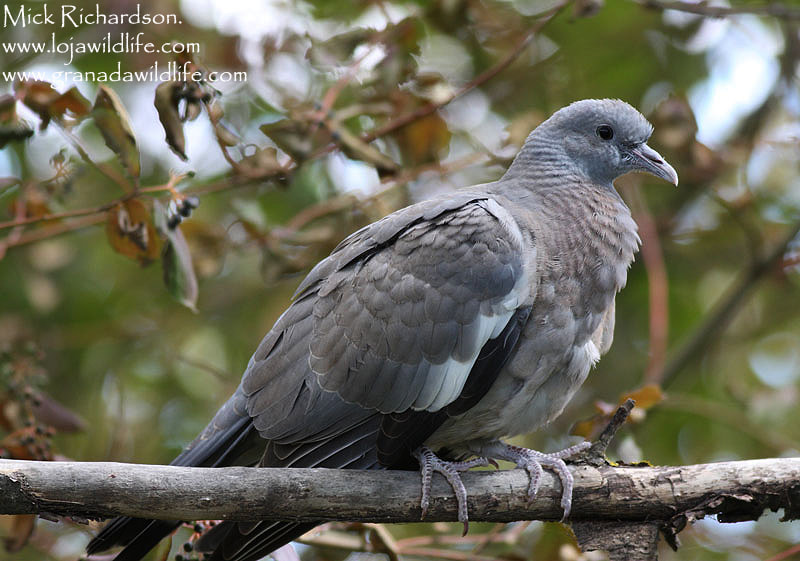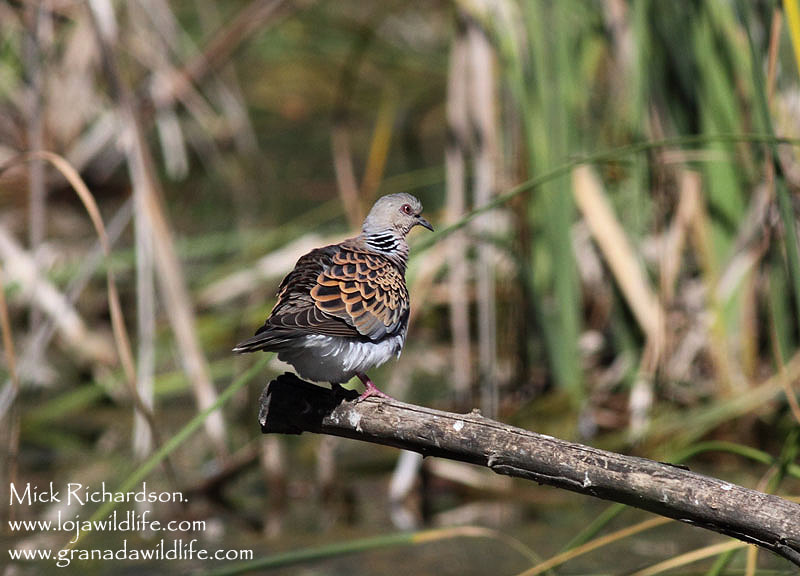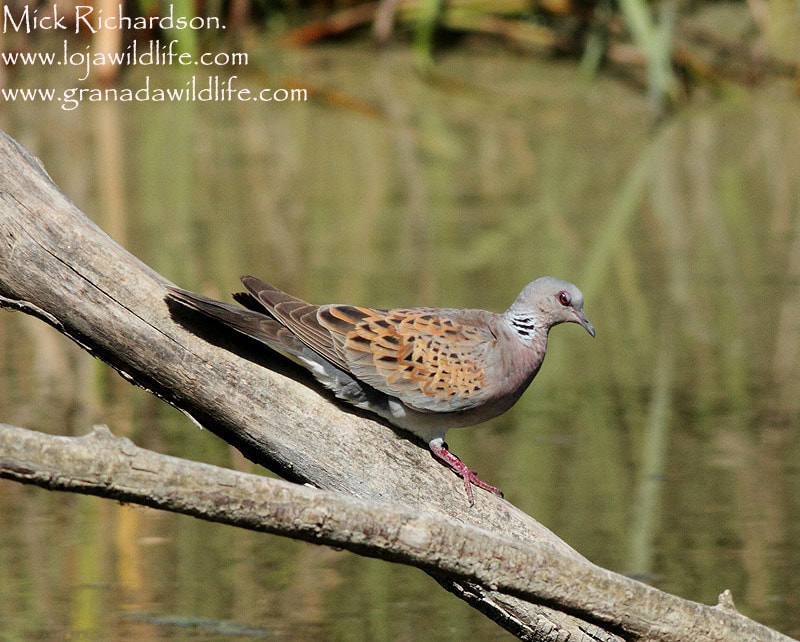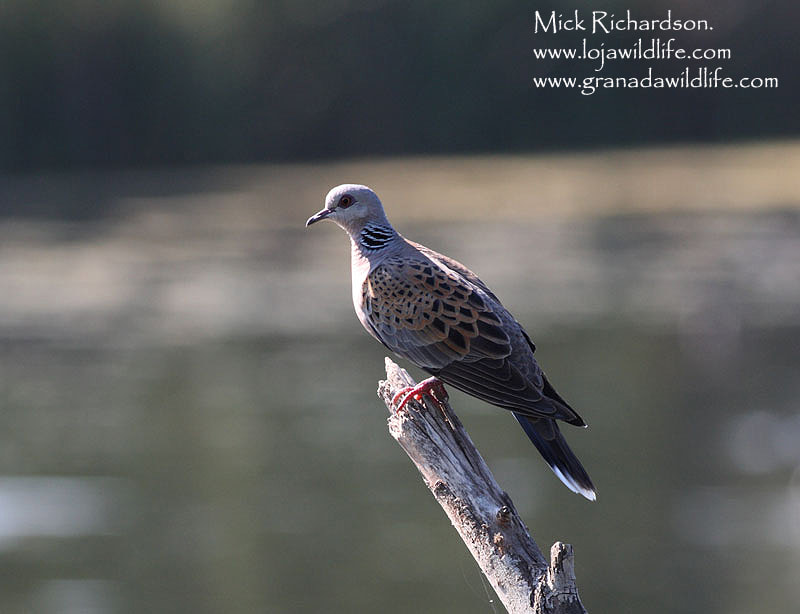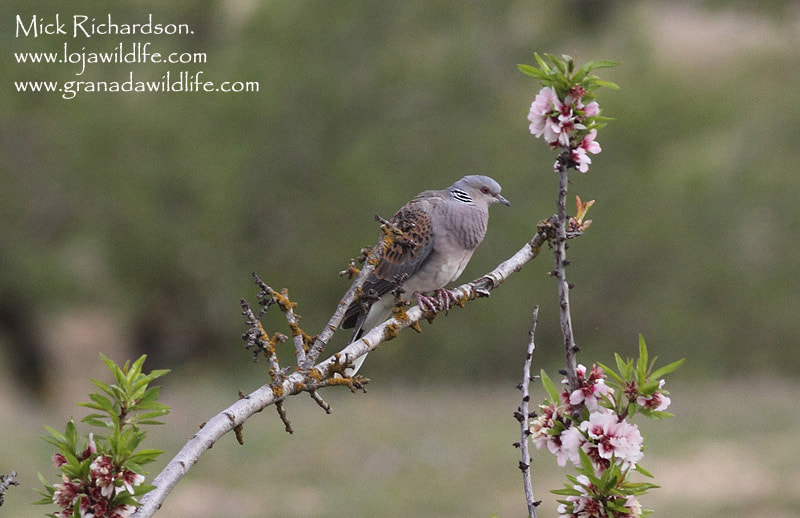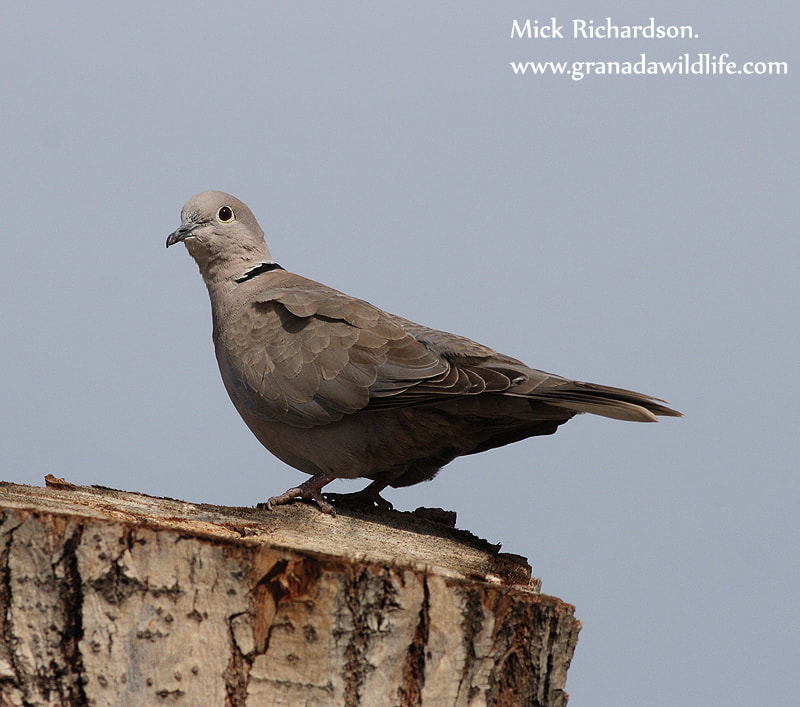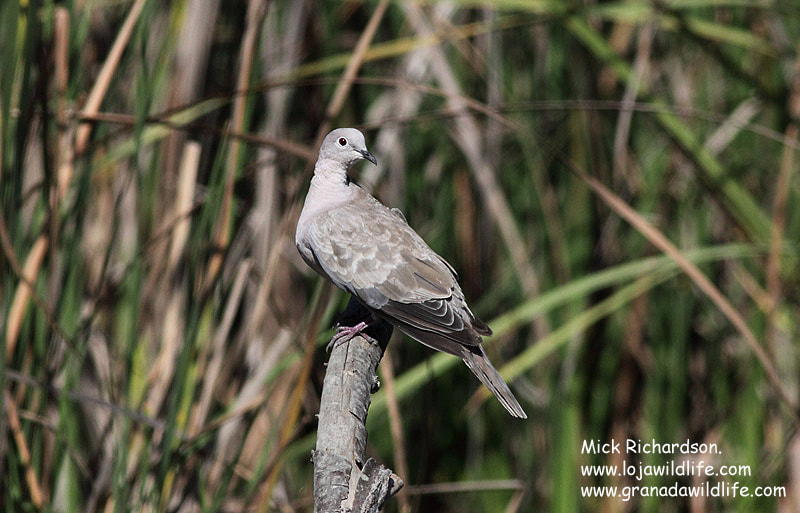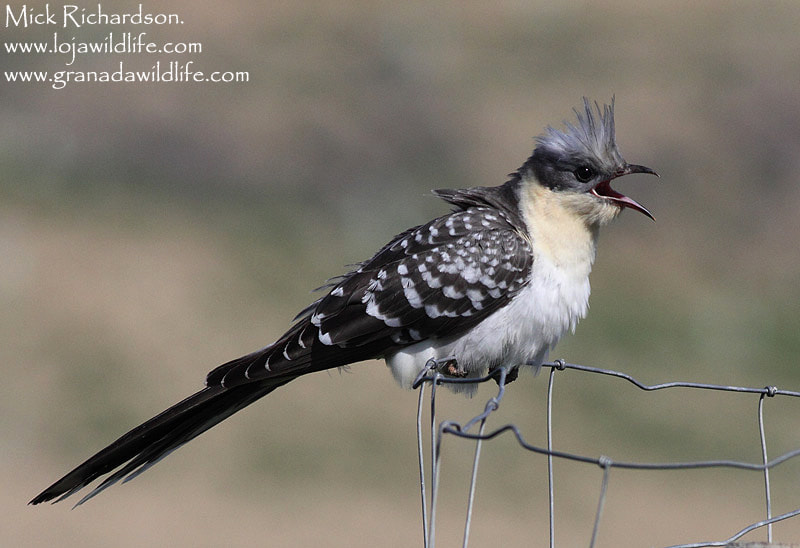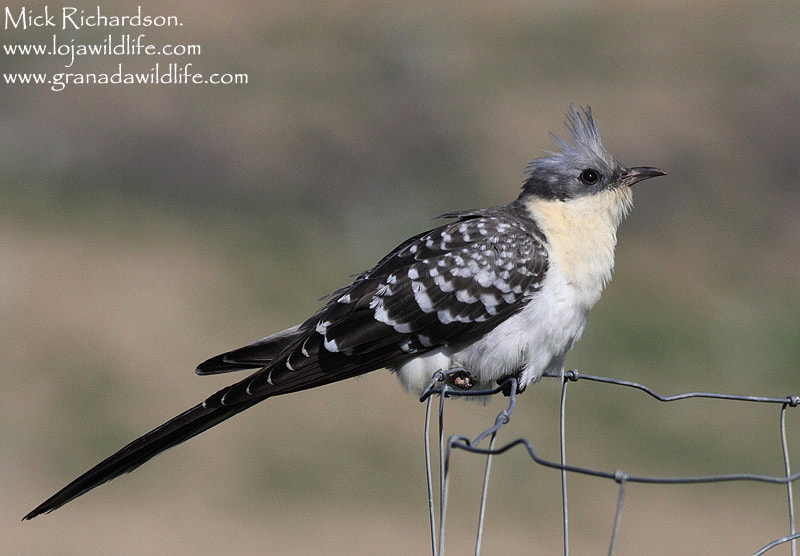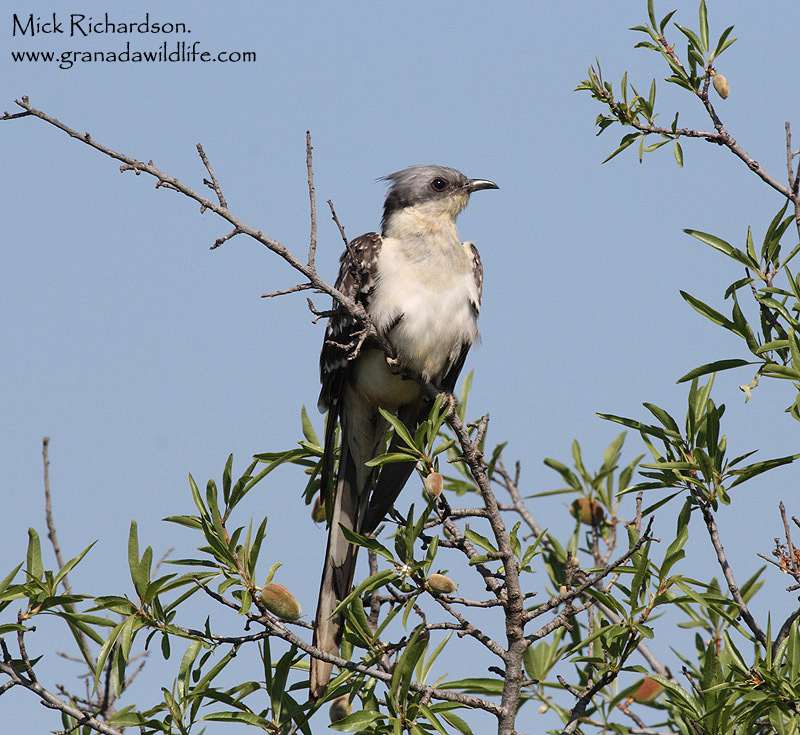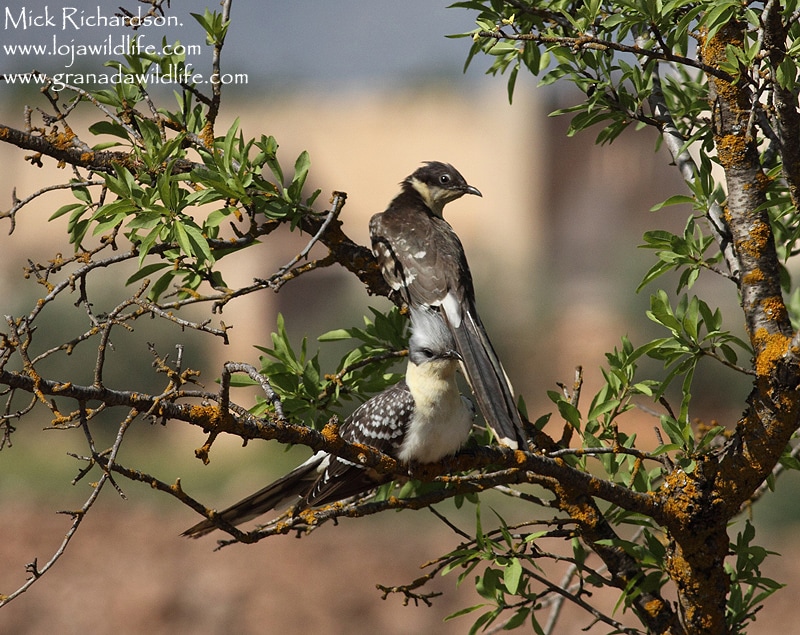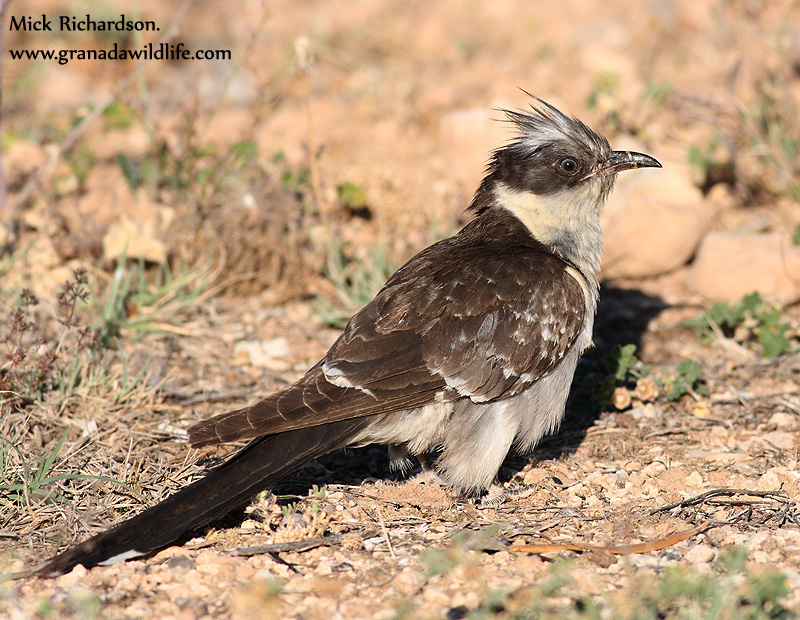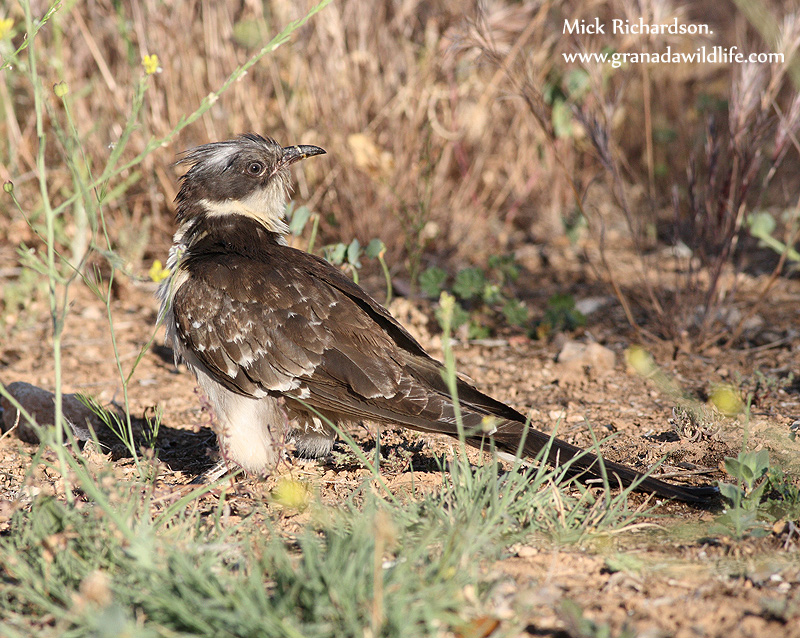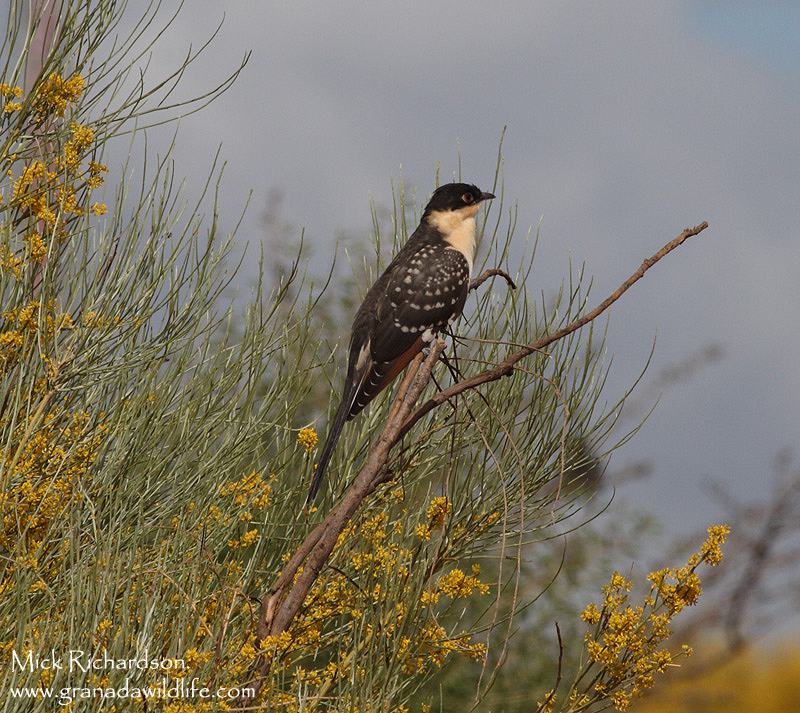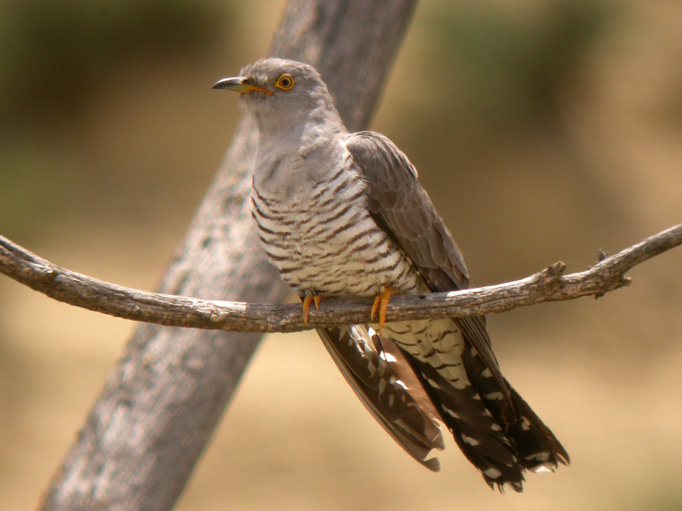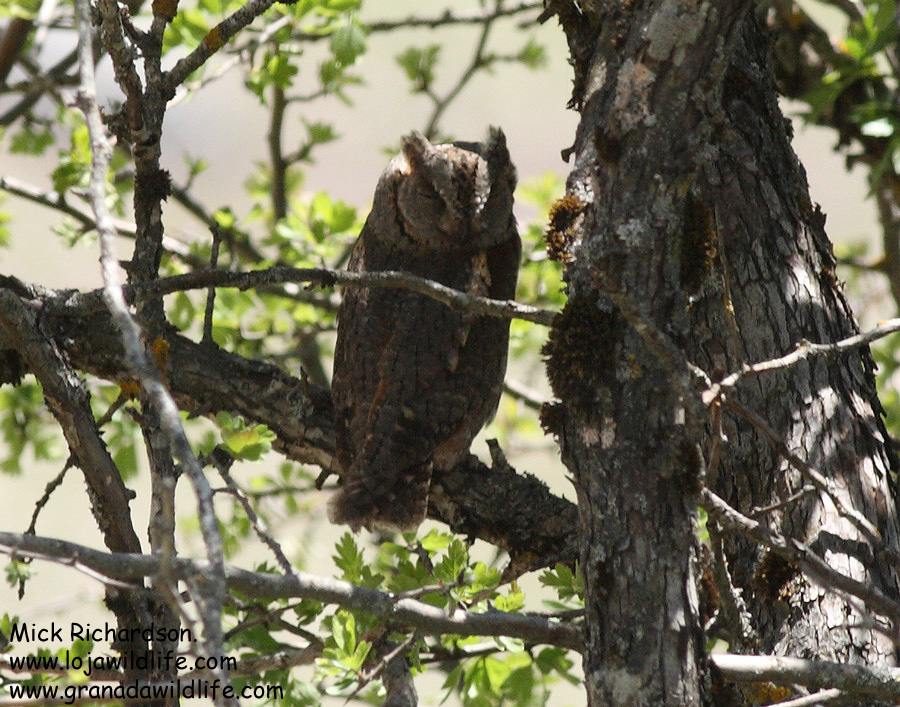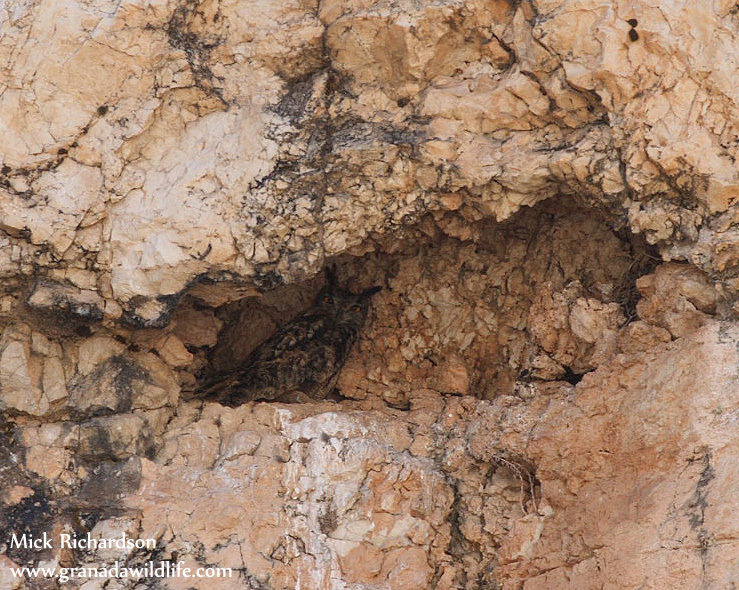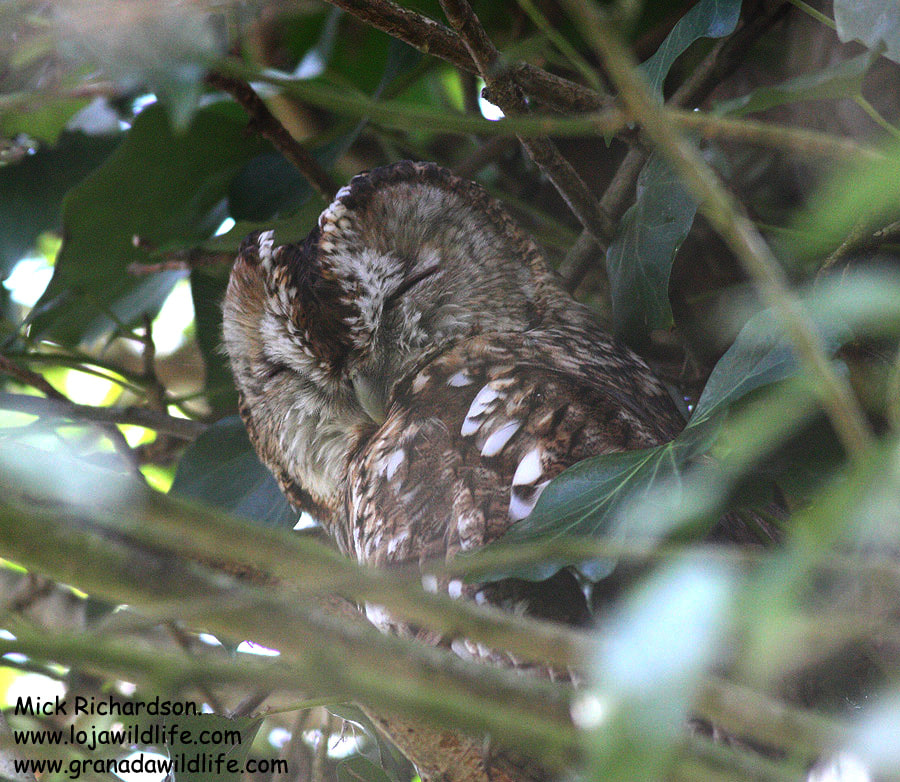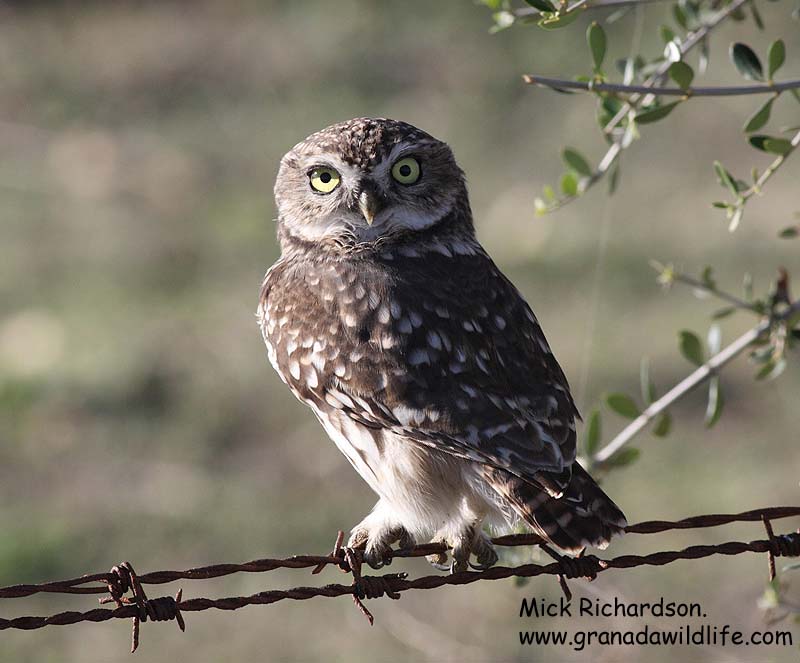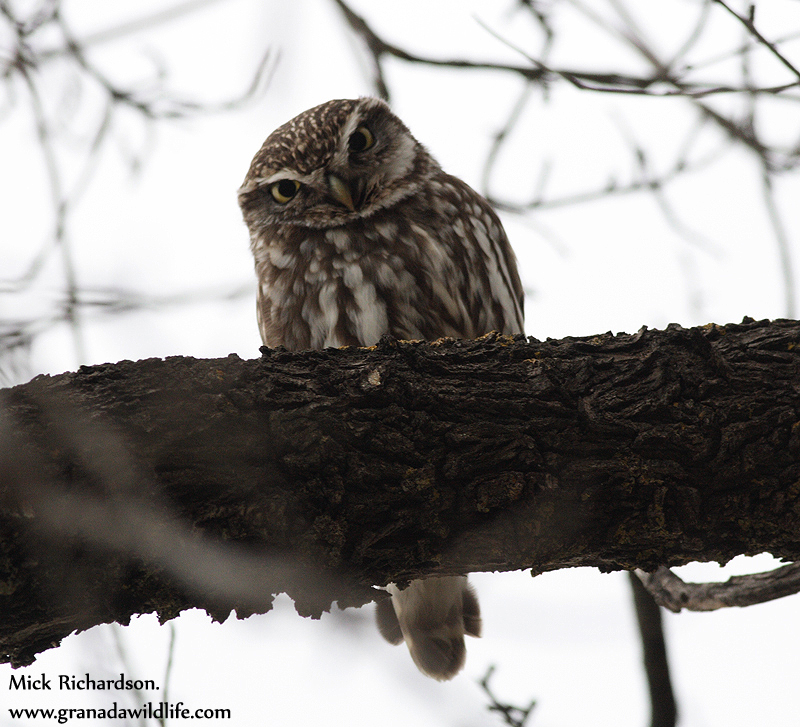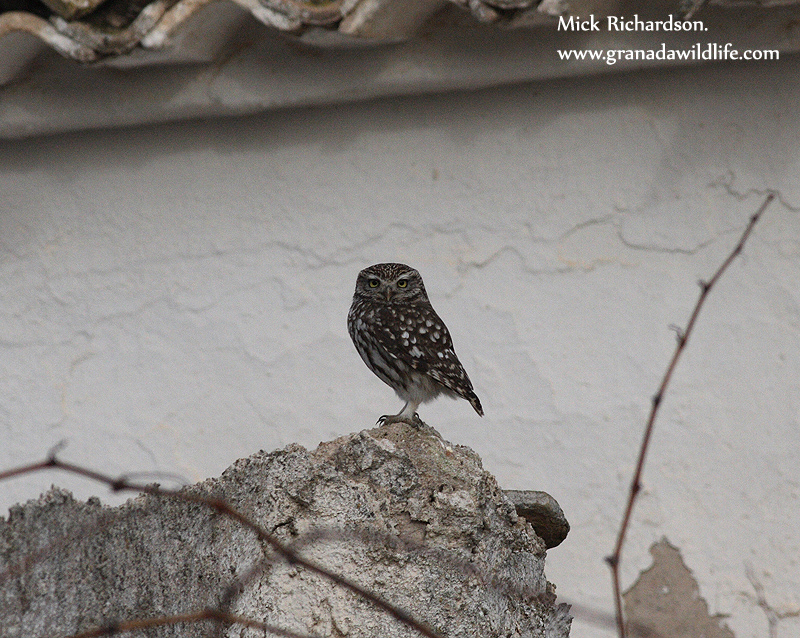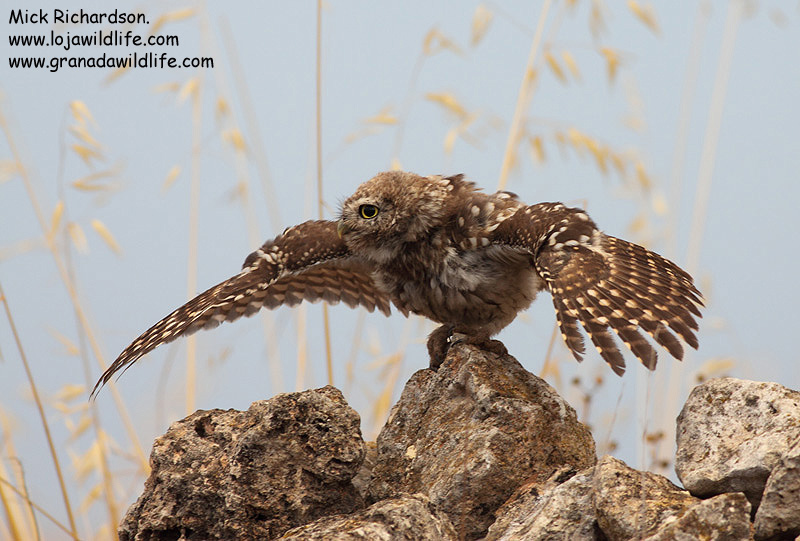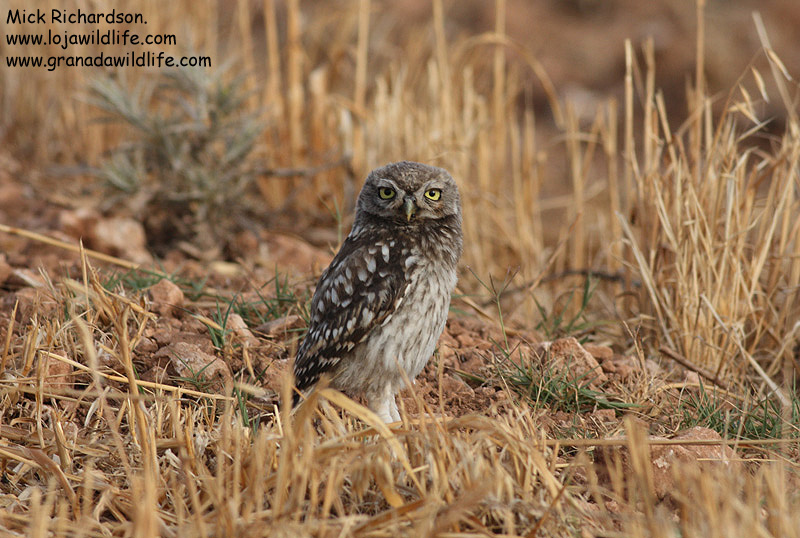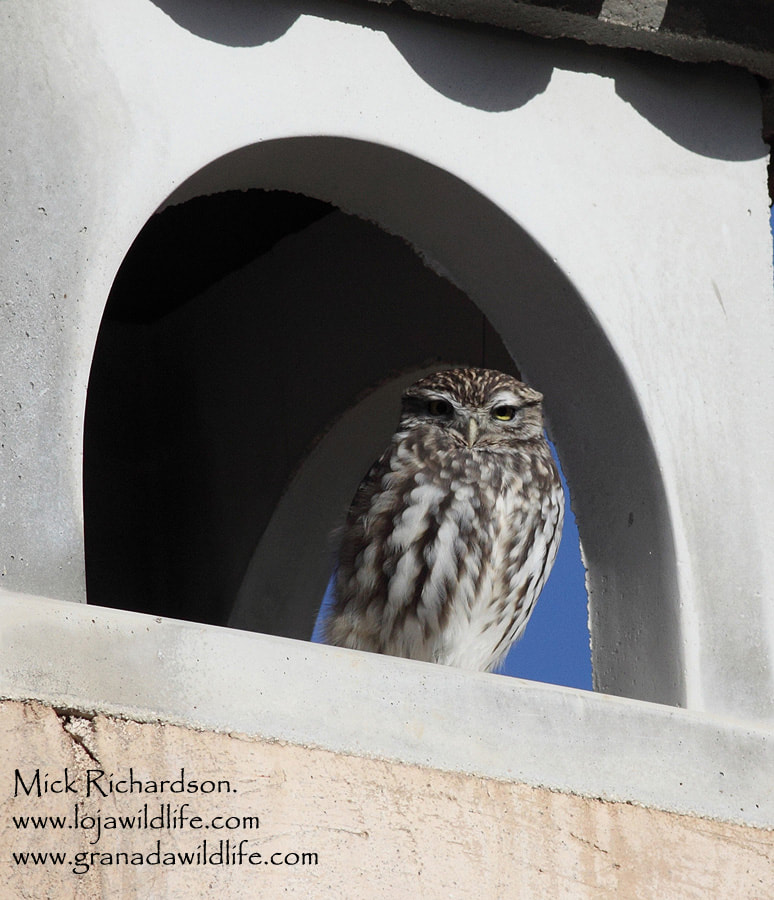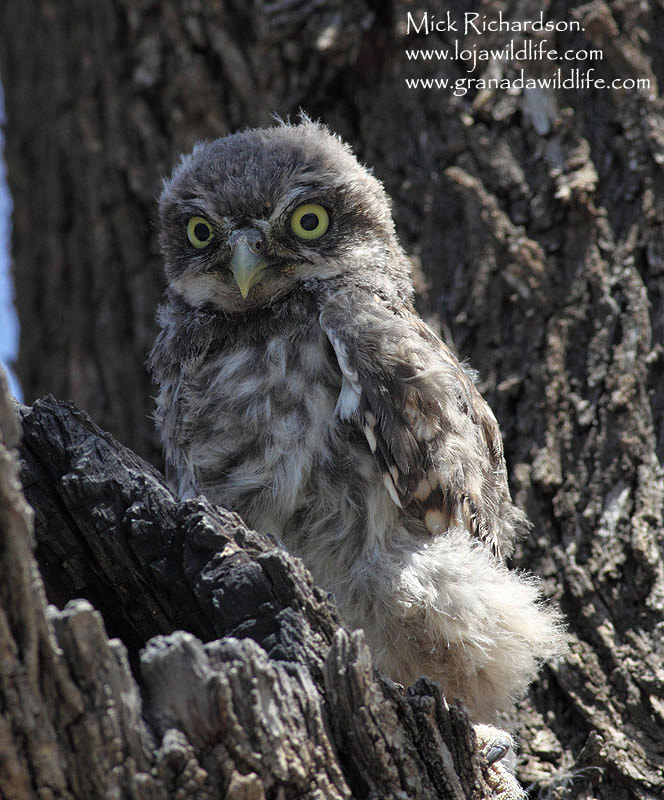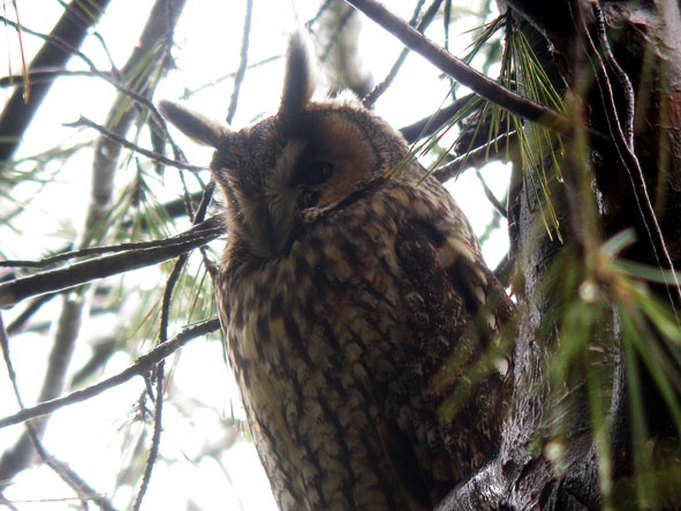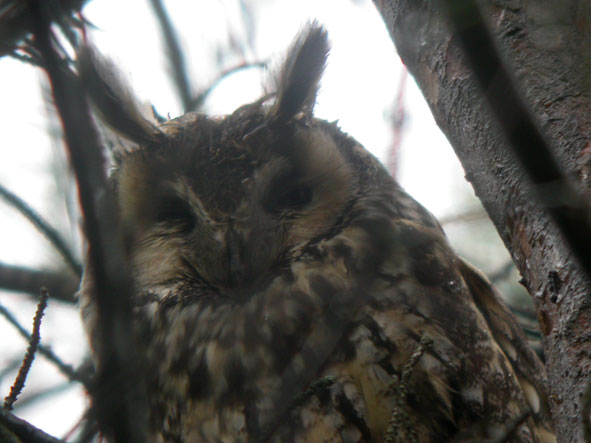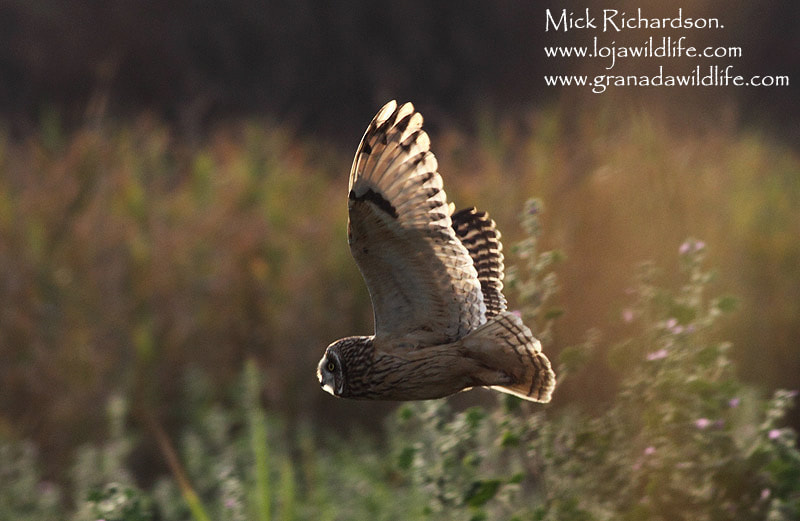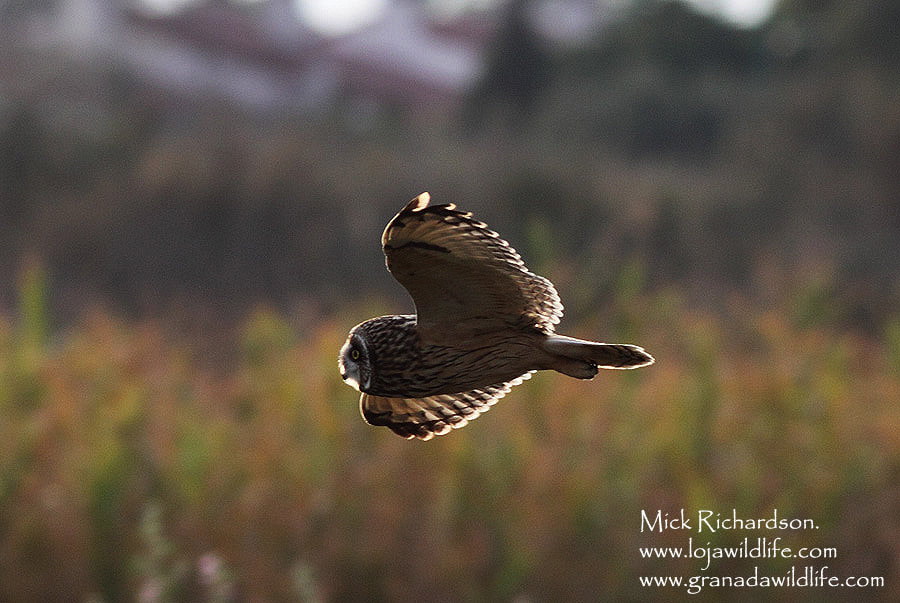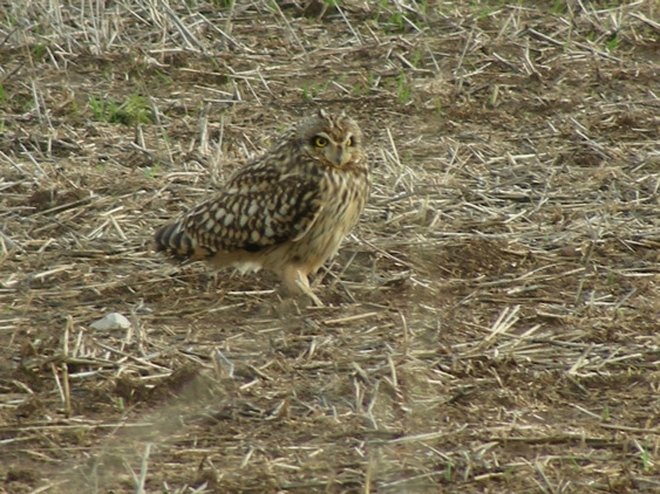Species information.
Rock / Feral Pigeon (Paloma Bravia / Columba livia).
A very common species which sometimes forms huge flocks in the countryside and cities alike. It is still possible to find some convincing populations of Rock doves but they are fewer each year.
Stock Dove (Paloma Zurita / Columba oenas).
An uncommon winter visitor in area 2 with a count of 28 birds being the best flock, more usual are two or three birds.
Woodpigeon (Paloma Torcaz / Columba palumbus).
Common everywhere, in some poplar plantation can hold winter roost of several thousand birds in the Genil Valley.
Turtle Dove (Tórtola Europea / Streptopelia turtur).
A fairly common summer visitor that can be seen in all areas but less common higher up in the sierra.
Collared Dove (Tórtola Turca / Streptopelia decaocto).
Common in all areas except rght on top of the sierra.
Monk Parakeet (Cotorra Argentina / Myiopsitta monachus).
A very common escape in coastal areas and around Granada City but I have only seen a single bird which spent a few days just to the North of Huétor Tajar in area 2.
Great Spotted Cuckoo (Crialo Europeo / Clamator gladarius).
A stunning and noisy species which arrives back in the area at the end of February in good numbers. Found locally in several spots but commonest in areas 3 and 6 where its hyper active yaffle can be heard up until June from the adult birds before they leave and head south, the young take over then moving around with there adopted parents which are usually Common Magpie (Urraca / Pica pica).
Common Cuckoo (Cuco Común / Cuculus canorus).
A regularly heard species which arrives in April and can be heard all summer but more difficult to see. Best areas are 3,6 and 9 down the eastern side and 4 and 5 down the west.
Barn Owl (Lechuza Común / Tyto alba).
An uncommon species only seen once or twice a year, most sightings are in areas 1, 2 and 3 along the A92 motorway amongst the fields.
Scop's Owl (Autillo Europeo / Otus scops).
Regularly heard but very hard to see, it's sonar call is heard in all areas including a the top of the sierra amongst the stunted Hawthorn bushes.
Eagle Owl (Buho Real / Bubo bubo).
Not an uncommon species with several nest platforms in the area.
Tawny Owl (Cárabo Común / Strix aluco).
A very uncommon species which has been reported just the once calling in area 3.
Little Owl (Mochuelo Europeo / Athene noctua).
A common species found in all areas and can often be found perched out in the open in the full sun and during the breeding season can regularly seen hunting in day light.
Long-eared Owl (Buho Chica / Asio otus).
A difficult to find species but is suposed to be regular in pine woodlands within the area, I have seen just a single bird in flight in area 9 but a friend had one at my house in area 2 which I missed.
Short-eared Owl (Buho Campestre / Asio flammeus).
An uncommon wintering species recorded just once in area 3. There was a roost of several birds just outside the area for a few years until it was destroyed.
